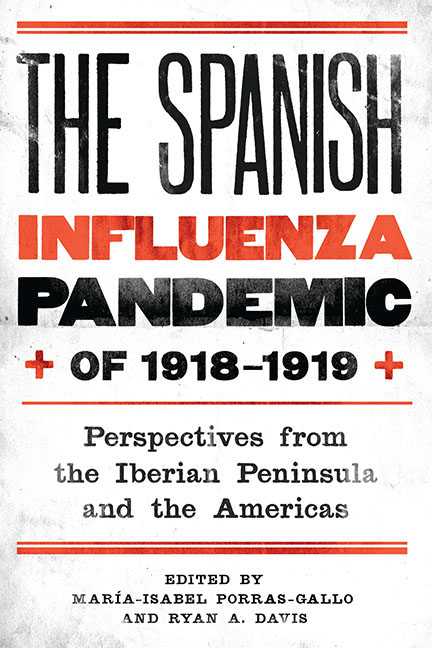 The Spanish Influenza Pandemic of 1918–1919
The Spanish Influenza Pandemic of 1918–1919 from Part Two - Social Responses: Human and Institutional Actors
Published online by Cambridge University Press: 14 March 2018
As noted in the introduction to this volume, the 1918–19 influenza pandemic started when Spain was very backward in public health matters and when the political crisis and adverse socioeconomic conditions made it difficult to answer the call for modernization from different medical sectors and health authorities. The Military Medical Service, having undergone a radical transformation during the reign of Isabel II (1833–68), was fighting to achieve scientific supremacy vis-à-vis an impoverished Civilian Public Health Service. But the Spanish army needed to reorganize and improve some of its infrastructure for this to occur. For instance, the hygienic conditions of the barracks and the food the soldiers were receiving were rather poor. As we shall see, these conditions would become prominent during the pandemic and, for some people, responsible for its existence and gravity.
As Charles Rosenberg has noted, an epidemic offers a cross-section of society, helping to highlight the existing and latent problems a given community has at the time of the outbreak. Moreover, an epidemic as a social phenomenon takes the form of a theatrical drama. In a limited time and space, different social groups are forced to modify their usual dynamic and to perform various activities to address the critical situation. This results in the mobilization of their members to perform propitiatory rituals, incorporating and reaffirming their fundamental social and cultural values.
Taking Rosenberg's approach as a starting point and using as my main sources military scientific journals and newspapers, as well as the general and popular press, this chapter explores the reactions of Spain's Military Medical Service to the 1918–19 influenza pandemic. In what follows I focus on the social impact of debates as well as on tensions and conflicts between different sectors of society. For this reason I assess whether the Military Medical Service defended scientific opinions that were more modern than those of the Sanidad Civil (Civilian Health Service) and whether there were any conflicts of interest between the measures they both took in response to the epidemic, especially as related to soldiers.
To save this book to your Kindle, first ensure [email protected] is added to your Approved Personal Document E-mail List under your Personal Document Settings on the Manage Your Content and Devices page of your Amazon account. Then enter the ‘name’ part of your Kindle email address below. Find out more about saving to your Kindle.
Note you can select to save to either the @free.kindle.com or @kindle.com variations. ‘@free.kindle.com’ emails are free but can only be saved to your device when it is connected to wi-fi. ‘@kindle.com’ emails can be delivered even when you are not connected to wi-fi, but note that service fees apply.
Find out more about the Kindle Personal Document Service.
To save content items to your account, please confirm that you agree to abide by our usage policies. If this is the first time you use this feature, you will be asked to authorise Cambridge Core to connect with your account. Find out more about saving content to Dropbox.
To save content items to your account, please confirm that you agree to abide by our usage policies. If this is the first time you use this feature, you will be asked to authorise Cambridge Core to connect with your account. Find out more about saving content to Google Drive.